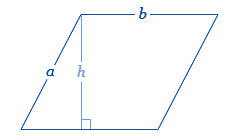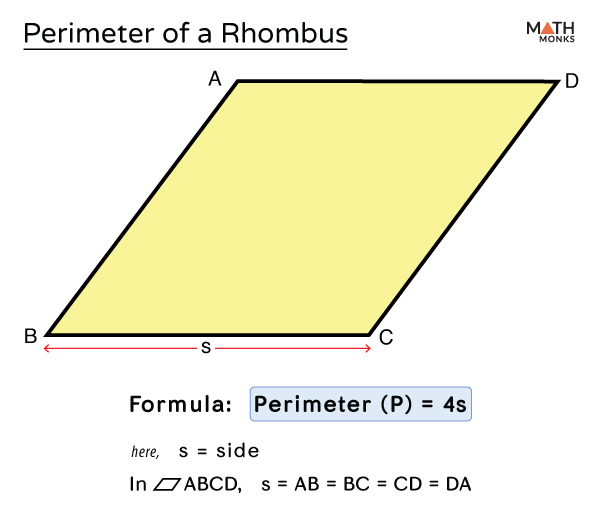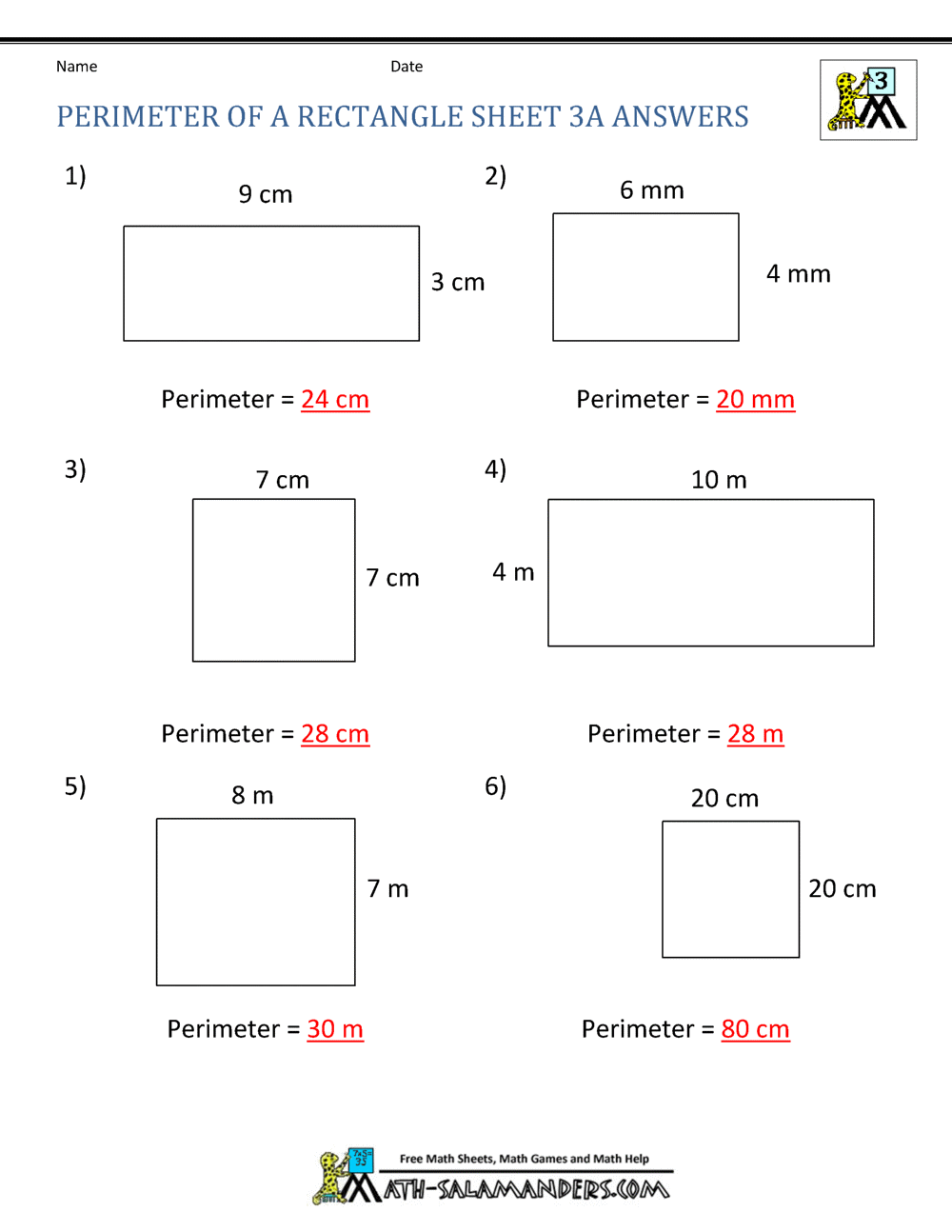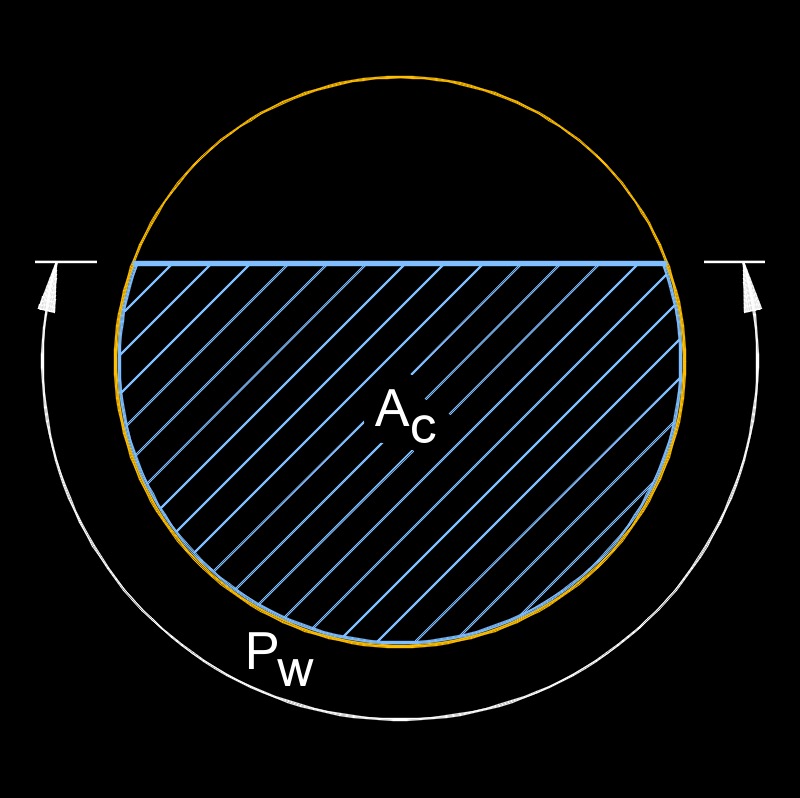Topic parallelogram perimeter calculator: Discover the most efficient way to calculate the perimeter of a parallelogram with our Parallelogram Perimeter Calculator. Perfect for students, teachers, and geometry enthusiasts, our tool simplifies the process, providing quick and accurate results. Learn the formula, understand the steps, and enhance your mathematical skills with our comprehensive guide.
Table of Content
- Parallelogram Perimeter Calculator
- Introduction
- What is a Parallelogram?
- Properties of Parallelograms
- Understanding Perimeter
- Formula for Perimeter of a Parallelogram
- Steps to Calculate Perimeter
- Examples of Calculating Perimeter
- Using a Perimeter Calculator
- Online Parallelogram Perimeter Calculators
- Common Mistakes to Avoid
- Applications of Parallelogram Perimeter in Real Life
- Frequently Asked Questions
- Conclusion
- YOUTUBE: Hướng dẫn chi tiết cách tính chu vi của một hình bình hành, giúp bạn nắm vững kiến thức và áp dụng vào thực tế.
Parallelogram Perimeter Calculator
Use this calculator to find the perimeter of a parallelogram.
Definition
The perimeter of a parallelogram is the total distance around the outside of the parallelogram. It can be calculated if the lengths of the adjacent sides are known.
Formula
The formula to calculate the perimeter \(P\) of a parallelogram is:
$$ P = 2(a + b) $$
Where:
- \(a\) is the length of one pair of opposite sides
- \(b\) is the length of the other pair of opposite sides
Calculator
Enter the lengths of the sides to calculate the perimeter:

READ MORE:
Introduction
Welcome to the Parallelogram Perimeter Calculator guide. This tool is designed to help you quickly and accurately calculate the perimeter of a parallelogram. Whether you're a student, teacher, or geometry enthusiast, understanding how to compute the perimeter is essential for various mathematical applications. Let's start by exploring what a parallelogram is and the properties that define it.
A parallelogram is a four-sided polygon with opposite sides that are equal in length and parallel. The perimeter of a parallelogram is the total distance around the shape, which can be calculated if the lengths of two adjacent sides are known.
To calculate the perimeter of a parallelogram, you can use the following formula:
$$ P = 2(a + b) $$
Where:
- \(a\) is the length of one pair of opposite sides
- \(b\) is the length of the other pair of opposite sides
Here's a step-by-step guide to using the Parallelogram Perimeter Calculator:
- Measure the lengths of two adjacent sides of the parallelogram.
- Input these values into the calculator.
- Click the "Calculate" button to obtain the perimeter.
- The calculator will use the formula \( P = 2(a + b) \) to compute the result.
By following these steps, you can easily determine the perimeter of any parallelogram, making your geometry tasks simpler and more efficient.
What is a Parallelogram?
A parallelogram is a type of quadrilateral, which is a four-sided polygon. The defining characteristic of a parallelogram is that its opposite sides are both equal in length and parallel to each other. This unique property distinguishes parallelograms from other types of quadrilaterals.
Here are some key properties of a parallelogram:
- Opposite sides are equal: If one side is \(a\), the opposite side is also \(a\). Similarly, if one side is \(b\), the opposite side is also \(b\).
- Opposite angles are equal: The angles opposite each other in a parallelogram are equal in measure.
- Consecutive angles are supplementary: The sum of the measures of two adjacent angles in a parallelogram is \(180^\circ\).
- Diagonals bisect each other: The diagonals of a parallelogram intersect each other at their midpoints, dividing each diagonal into two equal parts.
These properties make parallelograms a fundamental shape in geometry, useful in various mathematical applications and problem-solving scenarios. Understanding these properties is essential when working with parallelograms, whether you're calculating area, perimeter, or other attributes.
In summary, a parallelogram is defined by its equal and parallel opposite sides, equal opposite angles, supplementary consecutive angles, and bisecting diagonals. These characteristics provide the foundation for further exploration and calculations involving parallelograms.
Properties of Parallelograms
A parallelogram is a four-sided polygon (quadrilateral) with some distinct properties that make it unique. Here are the key properties of parallelograms:
- Opposite Sides are Parallel and Equal: In a parallelogram, opposite sides are both parallel and of equal length. If we denote the sides as \(AB\), \(BC\), \(CD\), and \(DA\), then \(AB \parallel CD\) and \(BC \parallel DA\), and \(AB = CD\) and \(BC = DA\).
- Opposite Angles are Equal: The opposite angles of a parallelogram are equal. If we denote the angles as \(\angle A\), \(\angle B\), \(\angle C\), and \(\angle D\), then \(\angle A = \(\angle C\) and \(\angle B = \(\angle D\).
- Adjacent Angles are Supplementary: Adjacent angles in a parallelogram add up to 180 degrees. Therefore, \(\angle A + \angle B = 180^\circ\) and \(\angle B + \angle C = 180^\circ\).
- Diagonals Bisect Each Other: The diagonals of a parallelogram bisect each other. This means each diagonal cuts the other into two equal parts. If \(AC\) and \(BD\) are the diagonals, they intersect at point \(E\), such that \(AE = EC\) and \(BE = ED\).
- Area Calculation: The area of a parallelogram can be calculated using the formula: \[ \text{Area} = \text{base} \times \text{height} \] where the base is any side of the parallelogram and the height is the perpendicular distance from the base to the opposite side.
- Special Types: There are special types of parallelograms:
- Rectangle: A parallelogram with four right angles.
- Rhombus: A parallelogram with all sides of equal length.
- Square: A parallelogram that is both a rectangle and a rhombus, with four right angles and all sides equal.
Understanding Perimeter
The perimeter of a shape is the total distance around its edges. For a parallelogram, the perimeter can be calculated using the lengths of its sides. Specifically, a parallelogram has two pairs of opposite sides that are equal in length. The formula to find the perimeter of a parallelogram is:
\[
\text{Perimeter} = 2 \times (a + b)
\]
where \( a \) and \( b \) are the lengths of the two adjacent sides of the parallelogram.
- If the side lengths of a parallelogram are known, simply sum the lengths of the adjacent sides and multiply by 2.
- If only one side length and an angle are known, and you also know the area, you can use trigonometric functions to determine the other side length.
- If the lengths of the diagonals and the angle between them are known, you can use the Law of Cosines to determine the side lengths before calculating the perimeter.
Here are some examples to illustrate these calculations:
Example 1: Given Sides
Suppose a parallelogram has side lengths of 8 cm and 5 cm. Using the perimeter formula:
\[
\text{Perimeter} = 2 \times (8 + 5) = 2 \times 13 = 26 \text{ cm}
\]
Example 2: Given Side, Angle, and Area
Consider a parallelogram with one side 6 units long, an adjacent angle of 45°, and an area of 24 square units. First, find the other side length:
\[
b = \frac{24}{6 \times \sin(45^\circ)} \approx 5.66 \text{ units}
\]
Then calculate the perimeter:
\[
\text{Perimeter} = 2 \times (6 + 5.66) \approx 23.31 \text{ units}
\]
Example 3: Given Diagonals and Angle
If the diagonals of a parallelogram are 7 units and 9 units, and the angle between them is 60°, use the Law of Cosines to find the side lengths:
\[
a = \frac{1}{2} \sqrt{7^2 + 9^2 - 2 \times 7 \times 9 \times \cos(60^\circ)} \approx 4.09 \text{ units}
\]
\[
b = \frac{1}{2} \sqrt{7^2 + 9^2 + 2 \times 7 \times 9 \times \cos(60^\circ)} \approx 6.95 \text{ units}
\]
Then calculate the perimeter:
\[
\text{Perimeter} = 2 \times (4.09 + 6.95) \approx 22.07 \text{ units}
\]
Understanding and calculating the perimeter of a parallelogram is essential for various practical applications, including construction, design, and geometry. By following these methods, you can accurately determine the perimeter based on different sets of known values.

Formula for Perimeter of a Parallelogram
The perimeter of a parallelogram is the total distance around the shape. It can be calculated using various formulas depending on the known elements such as the lengths of sides, diagonals, and angles. Here, we outline the different scenarios and corresponding formulas:
- When the lengths of all sides are known:
If you know the lengths of the adjacent sides \(a\) and \(b\), the perimeter (\(P\)) can be calculated as:
\[ P = 2a + 2b \]
For example, if \(a = 8\) units and \(b = 12\) units, then:
\[ P = 2 \times 8 + 2 \times 12 = 40 \text{ units} \]
- When one side, an angle, and the area are known:
If you know one side \(a\), an adjacent angle \(\alpha\), and the area \(A\), you can find the other side \(b\) using the formula:
\[ b = \frac{A}{a \sin(\alpha)} \]
Then, the perimeter is:
\[ P = 2a + 2b \]
For instance, if \(a = 6\) units, \(\alpha = 45^\circ\), and \(A = 24\) square units, then:
\[ b = \frac{24}{6 \sin(45^\circ)} \approx 5.66 \text{ units} \]
Thus, the perimeter is:
\[ P = 2 \times 6 + 2 \times 5.66 \approx 23.31 \text{ units} \]
- When the lengths of the diagonals and the angle between them are known:
If the lengths of the diagonals \(d_1\) and \(d_2\) and the angle \(\theta\) between them are known, the sides \(a\) and \(b\) can be found using the formulas derived from the law of cosines:
\[ a = \frac{1}{2} \sqrt{d_1^2 + d_2^2 - 2d_1d_2\cos(\theta)} \]
\[ b = \frac{1}{2} \sqrt{d_1^2 + d_2^2 + 2d_1d_2\cos(\theta)} \]
Then, the perimeter is:
\[ P = 2a + 2b \]
For example, if \(d_1 = 7\) units, \(d_2 = 9\) units, and \(\theta = 60^\circ\), then:
\[ a = \frac{1}{2} \sqrt{7^2 + 9^2 - 2 \times 7 \times 9 \times \cos(60^\circ)} \approx 4.09 \text{ units} \]
\[ b = \frac{1}{2} \sqrt{7^2 + 9^2 + 2 \times 7 \times 9 \times \cos(60^\circ)} \approx 6.95 \text{ units} \]
Thus, the perimeter is:
\[ P = 2 \times 4.09 + 2 \times 6.95 \approx 22.07 \text{ units} \]
Steps to Calculate Perimeter
To calculate the perimeter of a parallelogram, you need to know the lengths of its sides. Here are the detailed steps to calculate the perimeter:
- Identify the lengths of the two pairs of opposite sides. Let's denote them as \( a \) and \( b \).
- Use the perimeter formula for a parallelogram: \[ P = 2(a + b) \]
- Substitute the lengths of the sides into the formula. For example, if \( a = 5 \) cm and \( b = 7 \) cm: \[ P = 2(5 + 7) = 2 \times 12 = 24 \, \text{cm} \]
- Simplify the expression to find the perimeter.
Below is a summary of the steps in a table format:
| Step | Description |
|---|---|
| 1 | Identify the lengths of sides \( a \) and \( b \). |
| 2 | Use the formula \( P = 2(a + b) \). |
| 3 | Substitute the side lengths into the formula. |
| 4 | Simplify to find the perimeter. |
Following these steps ensures that you can accurately calculate the perimeter of any parallelogram.
Examples of Calculating Perimeter
To calculate the perimeter of a parallelogram, you need to know the lengths of its sides. The formula for the perimeter P is:
\[ P = 2(a + b) \]
where a and b are the lengths of the adjacent sides.
Let's go through a few examples to understand how to use this formula:
Example 1
Given a parallelogram with side lengths \( a = 5 \, \text{cm} \) and \( b = 7 \, \text{cm} \):
- Identify the lengths of the sides: \( a = 5 \, \text{cm} \) and \( b = 7 \, \text{cm} \).
- Apply the formula: \( P = 2(a + b) \).
- Substitute the values: \( P = 2(5 + 7) \).
- Calculate the sum inside the parentheses: \( 5 + 7 = 12 \).
- Multiply by 2: \( P = 2 \times 12 = 24 \, \text{cm} \).
Therefore, the perimeter of the parallelogram is \( 24 \, \text{cm} \).
Example 2
Given a parallelogram with side lengths \( a = 8 \, \text{m} \) and \( b = 15 \, \text{m} \):
- Identify the lengths of the sides: \( a = 8 \, \text{m} \) and \( b = 15 \, \text{m} \).
- Apply the formula: \( P = 2(a + b) \).
- Substitute the values: \( P = 2(8 + 15) \).
- Calculate the sum inside the parentheses: \( 8 + 15 = 23 \).
- Multiply by 2: \( P = 2 \times 23 = 46 \, \text{m} \).
Therefore, the perimeter of the parallelogram is \( 46 \, \text{m} \).
Example 3
Given a parallelogram with side lengths \( a = 4.5 \, \text{in} \) and \( b = 6.5 \, \text{in} \):
- Identify the lengths of the sides: \( a = 4.5 \, \text{in} \) and \( b = 6.5 \, \text{in} \).
- Apply the formula: \( P = 2(a + b) \).
- Substitute the values: \( P = 2(4.5 + 6.5) \).
- Calculate the sum inside the parentheses: \( 4.5 + 6.5 = 11 \).
- Multiply by 2: \( P = 2 \times 11 = 22 \, \text{in} \).
Therefore, the perimeter of the parallelogram is \( 22 \, \text{in} \).
Using a Perimeter Calculator
Calculating the perimeter of a parallelogram can be simplified using an online perimeter calculator. Here are the steps to use a perimeter calculator effectively:
-
Identify the Side Lengths: Before using the calculator, you need to know the lengths of the adjacent sides of the parallelogram. Let's denote these sides as \( a \) and \( b \).
-
Input the Values: Enter the lengths of sides \( a \) and \( b \) into the corresponding fields in the calculator.
-
Calculate the Perimeter: Click the 'Calculate' button. The calculator will use the perimeter formula:
\[ P = 2(a + b) \]to compute the perimeter of the parallelogram.
Example Calculation
Consider a parallelogram with side lengths \( a = 8 \, \text{cm} \) and \( b = 5 \, \text{cm} \). Using the formula:
\[ P = 2(8 + 5) = 2 \times 13 = 26 \, \text{cm} \]
Additional Features
- The calculator can handle both integer and decimal inputs for more precise measurements.
- Some calculators also allow you to input angles and area to compute the perimeter when not all sides are known.
Using Advanced Inputs
If you know one side length \( a \), an adjacent angle \( \alpha \), and the area \( A \), you can find the other side length \( b \) using the formula:
\[ b = \frac{A}{a \sin(\alpha)} \]
Then, you can calculate the perimeter as:
\[ P = 2(a + b) \]
Conclusion
Using an online perimeter calculator simplifies the process of finding the perimeter of a parallelogram. These tools are user-friendly and provide accurate results quickly, making them a valuable resource for students, teachers, and professionals alike.

Online Parallelogram Perimeter Calculators
Online parallelogram perimeter calculators are handy tools that simplify the process of finding the perimeter of a parallelogram. Here's a step-by-step guide on how to use these calculators effectively:
- Open your preferred online parallelogram perimeter calculator. Some popular options include calculators from Symbolab, ToolPrime, and OwlCalculator.
- Locate the input fields for the lengths of the adjacent sides of the parallelogram. These are typically labeled as side a and side b.
- Enter the length of the first side (a) in the designated input box. For example, if side a is 8 cm, enter
8. - Enter the length of the second side (b) in the next input box. For instance, if side b is 10 cm, enter
10. - Click the "Calculate" button. The calculator will automatically apply the perimeter formula for a parallelogram:
\( P = 2(a + b) \)
The result will display the perimeter of the parallelogram. For example, if a = 8 cm and b = 10 cm, the calculator will show:
\( P = 2(8 + 10) = 36 \text{ cm} \)
Here are a few example calculations to illustrate:
- Example 1: For a parallelogram with sides a = 6 cm and b = 9 cm:
\( P = 2(6 + 9) = 30 \text{ cm} \)
- Example 2: For a parallelogram with sides a = 4.5 cm and b = 7 cm:
\( P = 2(4.5 + 7) = 23 \text{ cm} \)
Using online calculators can save time and reduce errors in manual calculations. These tools are especially useful for students, teachers, and professionals who need quick and accurate results.
Common Mistakes to Avoid
When calculating the perimeter of a parallelogram, it's important to be aware of common mistakes that can lead to incorrect results. Here are some common pitfalls and tips on how to avoid them:
- Incorrect Side Lengths: Ensure that you correctly identify the lengths of the sides. Remember that in a parallelogram, opposite sides are equal. Double-check your measurements before proceeding with calculations.
- Using the Wrong Formula: The perimeter of a parallelogram is calculated using the formula \( P = 2(a + b) \), where \( a \) and \( b \) are the lengths of the adjacent sides. Avoid using formulas meant for other shapes, such as rectangles or triangles.
- Measurement Units: Ensure that all side lengths are in the same unit of measurement. Mixing units (e.g., meters with centimeters) will result in incorrect calculations. Convert all measurements to the same unit before calculating the perimeter.
- Ignoring Angles: While angles are not needed for perimeter calculations, ensure that the sides used are adjacent. Misidentifying sides due to angle misinterpretation can lead to errors.
- Rounding Errors: Be careful with rounding numbers too early in your calculations. For more accurate results, perform calculations with the full decimal values and round only the final result.
- Incorrect Input in Calculators: When using online calculators, double-check your input values. Ensure you are entering the correct side lengths in the appropriate fields to avoid errors.
- Overlooking Special Cases: If the parallelogram is a special type, such as a rhombus (where all sides are equal), use the specific properties to simplify your calculations.
- Neglecting to Verify Results: Always verify your calculated perimeter by rechecking your work. Cross-verify with a different method or tool if possible to ensure accuracy.
By being aware of these common mistakes and taking steps to avoid them, you can ensure that your perimeter calculations for parallelograms are accurate and reliable.
Applications of Parallelogram Perimeter in Real Life
The perimeter of a parallelogram has various practical applications in real-life scenarios. Here are some detailed examples:
-
Architecture and Construction:
In architectural design, calculating the perimeter of parallelograms is crucial for determining the materials needed for construction projects, such as framing walls, laying tiles, and setting up foundations. Accurate perimeter calculations ensure efficient use of resources and structural integrity.
-
Landscaping and Gardening:
Landscapers use the perimeter of parallelogram-shaped garden beds or lawns to determine the length of fencing required or to plan the layout of pathways and decorative borders.
-
Manufacturing and Design:
In manufacturing, especially in the production of fabric, metal sheets, and other materials, knowing the perimeter helps in cutting the materials accurately to minimize waste and fit specific design requirements.
-
Sports and Recreation:
Sports fields, such as tennis courts and football fields, often have parallelogram shapes. Calculating their perimeter is essential for setting up boundaries, installing fences, and planning seating arrangements.
-
Art and Fashion:
In the fashion industry, designers use the perimeter to measure and cut fabrics precisely. This ensures that garments fit well and patterns align correctly. Similarly, artists use the perimeter to frame their artworks appropriately.
-
Urban Planning:
City planners use the perimeter of land plots to plan roadways, sidewalks, and utilities efficiently. Accurate perimeter measurements are vital for creating balanced and functional urban spaces.
-
Computer Graphics:
In digital design and computer graphics, the perimeter of parallelogram shapes is used to create accurate and visually appealing models. This is especially important in animations and video game design where precision is key.
Understanding and applying the perimeter of parallelograms in these real-life contexts highlight the importance of geometric concepts in everyday activities and professional fields.
Frequently Asked Questions
Here are some frequently asked questions about calculating the perimeter of a parallelogram:
- What is the formula for the perimeter of a parallelogram?
The formula for the perimeter of a parallelogram is \( P = 2(a + b) \), where \( a \) and \( b \) are the lengths of the adjacent sides.
- Can I use the perimeter formula for any parallelogram?
Yes, the perimeter formula \( P = 2(a + b) \) is applicable for all parallelograms, regardless of their angles or the lengths of their sides.
- What units should I use when calculating the perimeter?
The units of the perimeter will be the same as the units used for the side lengths. For example, if the side lengths are measured in centimeters, the perimeter will also be in centimeters.
- How can I measure the sides of a parallelogram?
You can use a ruler or a measuring tape to measure the lengths of the sides of a parallelogram. Ensure you measure in a straight line from one vertex to the next.
- What if the sides of the parallelogram are given in different units?
Convert all side lengths to the same unit before using the perimeter formula. For example, if one side is in meters and the other in centimeters, convert one so that both are in the same unit.
- Is the perimeter of a parallelogram the same as its area?
No, the perimeter and the area of a parallelogram are different measurements. The perimeter measures the distance around the parallelogram, while the area measures the space inside it.
- Can I use an online calculator to find the perimeter of a parallelogram?
Yes, there are many online calculators available that can help you calculate the perimeter of a parallelogram. You just need to input the lengths of the sides, and the calculator will do the rest.
- What are common mistakes to avoid when calculating the perimeter?
Common mistakes include using incorrect side lengths, not converting units to be consistent, and confusing perimeter with area. Always double-check your measurements and calculations.
- How is the perimeter of a parallelogram used in real life?
The perimeter of a parallelogram can be used in various real-life applications, such as determining the length of fencing needed to enclose a parallelogram-shaped garden or the trim required for a parallelogram-shaped frame.
- Are there any tools that can help with calculating the perimeter?
Yes, in addition to online calculators, there are also apps and software that can assist with geometry calculations, including the perimeter of a parallelogram.

Conclusion
Understanding the perimeter of a parallelogram is a fundamental aspect of geometry that has practical applications in various fields such as architecture, engineering, and design. By knowing the lengths of the sides of a parallelogram, you can easily calculate its perimeter using the formula:
\( P = 2 \times (a + b) \)
Where \( a \) and \( b \) are the lengths of the two pairs of opposite sides. This straightforward formula allows for quick and accurate calculations, making it a valuable tool for students and professionals alike.
Online parallelogram perimeter calculators simplify this process even further, providing instant results and eliminating the possibility of manual calculation errors. These calculators typically require only the input of the side lengths, making them user-friendly and efficient.
In conclusion, mastering the calculation of a parallelogram's perimeter enhances your mathematical skills and aids in practical problem-solving. Whether you are calculating by hand or using an online tool, the key is understanding the fundamental properties and formulas related to parallelograms. Embrace the use of technology to make your calculations easier and more reliable.
Remember, the more you practice, the more proficient you will become in geometry, and the better prepared you will be to tackle real-world challenges involving parallelograms and other geometric shapes.
Hướng dẫn chi tiết cách tính chu vi của một hình bình hành, giúp bạn nắm vững kiến thức và áp dụng vào thực tế.
Cách Tìm Chu Vi Của Một Hình Bình Hành
READ MORE:
Video hướng dẫn cách tính chu vi hình bình hành bằng các bước đơn giản và dễ hiểu, giúp bạn nắm vững kiến thức về chu vi của hình bình hành.
Cách tính chu vi hình bình hành | Chu vi hình bình hành | Chu vi hình bình hành











